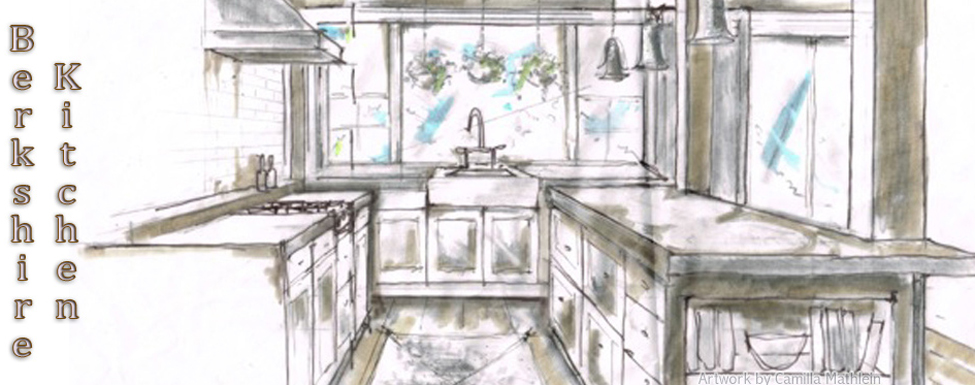Quince Jelly
I’m forecasting a delicious winter season here in the Berkshires. Folks sequestered at home have been trying out lots of new recipes, baking bread and trying their hand at canning for the first time. When the cold weather hits it’ll be fun to reminisce about the warmer months by heating up a jar of your own canned marinara sauce or some local corn you’ve stored in the freezer.
In the fall I look forward to the season’s quince harvest. These fruits look like odd-shaped pears the color of golden delicious apples. They are gorgeous fruits that are very aromatic as they ripen, perfect for a beautiful still-life arrangement on a dining room table. Quinces aren’t very commonly used in American cuisine but are popular across the Mediterranean. Because quinces have a very high pectin content, they are an obvious choice for jams, jellies and pastes such as the Spanish “membrillo.” Interestingly, the Portuguese version of quince paste is called “marmelado,” which is the origin of our word marmalade.
Although they cannot be eaten raw because of their hard and extremely astringent flesh, when they are cooked the fruit transforms into a beautiful rosy color with a delicate taste. Making quince jelly is a good choice for the novice cook, as it only requires four ingredients: quince, water, lemon and sugar. The naturally high pectin content means that you don’t have to fuss with adding any powdered or liquid pectin when making jelly. Because the skin and seeds contain most of the pectin, the fruits don’t have to be peeled or cored before cooking. The only disadvantage may be that quinces can be difficult to cut as they are very hard, requiring a good sturdy knife and a strong arm.
As they cook down, quince’s color dramatically undergo a metamorphosis into an amber-colored sauce. Strain the cooked quinces through a fine-meshed chinois or through several layers of moistened cheesecloth to extract the juice from the pulp. Stored in canning jars* the quince liquid will begin to thicken into a jelly over the next 24 hours. I like to store my quince jelly in small ½ cup canning jars. It’s especially delicious on a scone or used as a glaze for poultry.
QUINCE JELLY
Makes about 12 half-cup jars of jelly
6 cups water
Juice and zest from 2 lemons
5 pounds quince
3 cups granulated sugar
Fine-mesh chinois or cheesecloth
Canning jars for storage
Put the water, lemon juice and zest into a large pot. As you cut the quince, immediately transfer them to the water to avoid decolorization.
Remove any labels from the quince and wash the skins well to remove any fuzz on the skin (quince are naturally fuzzy like peaches). Cut the quince into quarters and place into the pot: skin, core, seeds and all.
Add the sugar and bring the water to a boil. Reduce the heat to a simmer, cover the pot and cook the quince for 45 minutes.
Check to make sure that the fruit is soft. If not, continue simmering for another 10 minutes. When done, use a potato masher to crush the pulp as much as possible.
Pour the cooked pulp into a chinois placed over a large bowl, or into a colander lined with 2 layers of moistened cheesecloth. Press down on the pulp to extract as much liquid as possible.
Pour the quince liquid into pre-sterilized canning jars and process as per instructions on the canning jar box.
NOTE: Don’t fret if your first attempt at making quince jelly isn’t perfect. If the liquid doesn’t solidify into a firm jelly after 24-hours, you can return the mixture to the pot and add a tablespoon of powdered pectin. Stir well and reheat the jelly to a simmer to dissolve the pectin throughout. Re-sterilize your canning jars, and use new tops when resealing your jelly.
* Be sure to follow manufacturer’s instructions for safely sterilizing canning jars prior to use, and always use new tops when processing food for storage. Although many local stores may have already sold out of this season’s canning jars and lids, they can be ordered from online stores such as Amazon.

